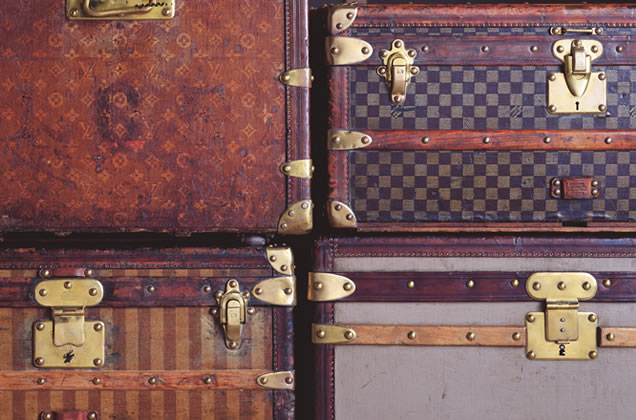Louis Vuitton’s fashion empire travelled a path from humble, provincial beginnings in eastern France to become one of the world’s most luxurious brand names.
Today, the name Louis Vuitton is king among luxury brands in the modern fashion world. For decades it has maintained its reign.
As a 13-year-old moving to Paris, it’s doubtful that Louis Vuitton could have anticipated what was awaiting him down the road. At 13, he left his home in Anchay, journeying west and working odd jobs for two years to pave his way to the city that was a growing centre of luxury, fashion and expensive taste.
When he finally arrived in 1837 at the age of 16, Vuitton became an apprentice to Monsieur Maréchal, a box maker and packer on Rue Saint-Honore. During his time at Maréchal’s atelier, Vuitton had his first brush with royalty, serving as the personal packer of the Empress of France and wife of Napoleon Bonaparte, Eugenie de Montijo.
Vuitton remained with Maréchal for 17 years before opening his own professional workshop on Rue Neuve-des-Capucines in 1854.
Vuitton produced handmade, custom trunks, which he offered to clients in addition to his packing services. Designed with fashionable colours and created with canvas and glue, Vuitton had created a durable and beautiful product that appealed to customers. His slat trunk, introduced in 1858, is said to be the first piece of modern luggage, a symbol of the age of easier and increasingly popular global travel.
The brand grew in popularity as the Vuitton workshop developed more innovative products in its luggage line. New designs continued to secure Vuitton’s name as a luxury brand, and a tumbler lock, supposedly impossible to break into, was introduced in 1890.
Two years later, on 27 February, 1892, Louis Vuitton died at 72. Despite the loss of its patriarch, the business carried on and expanded under the direction of Louis’s son Georges.
In 1896, the famous monogram canvas that has since become synonymous with the name was designed, and in 1914 a Louis Vuitton store opened on the Champs-Elysées.
Vuitton’s unmistakable monogrammed canvas bags have graced the wrists, arms, and shoulders of Princess Diana, Jackie Onassis and even Coco Chanel, herself a fashion powerhouse.
When Marc Jacobs was appointed the fashion house’s first creative director in 1997, he was faced with introducing ready-to-wear clothing collections for men and women.
Just as Louis had developed a product the Parisian elite needed to accommodate their lifestyle of luxury and travel, Jacobs recognized the need to keep up with the current demands of fashionable society while carrying on the traditions of the Louis Vuitton business, an empire that has travelled a long path of success.







